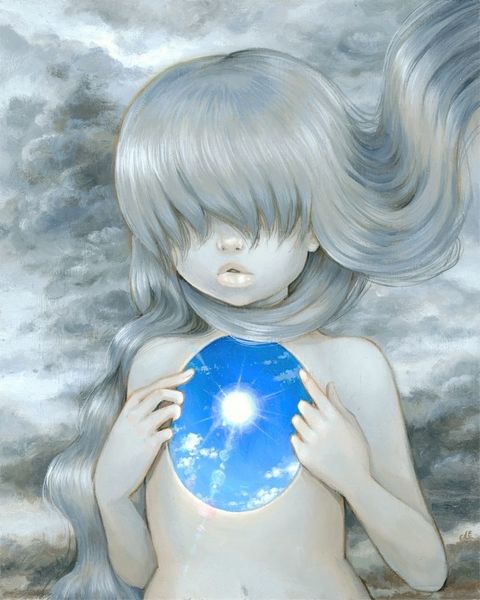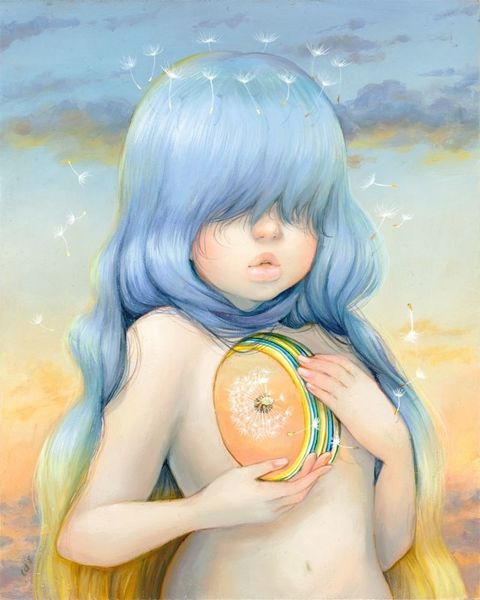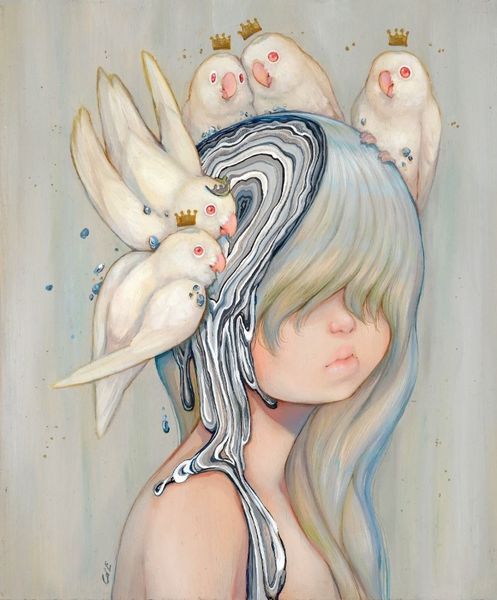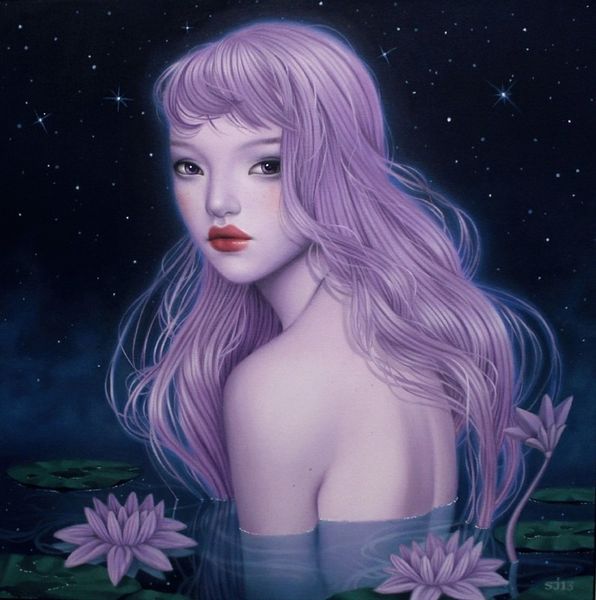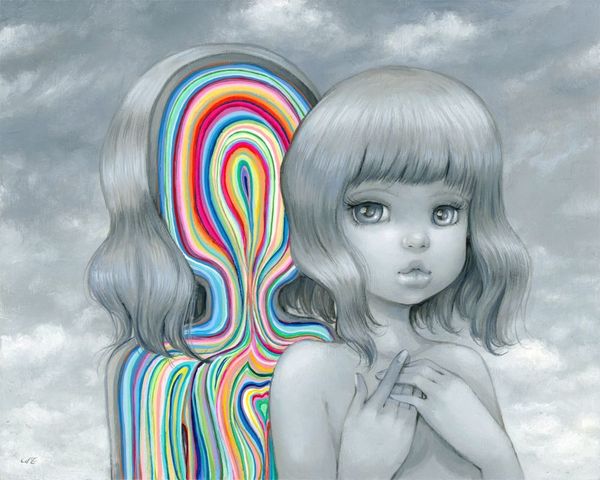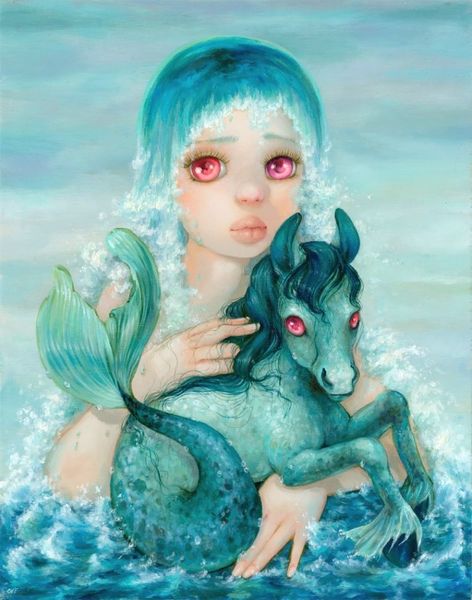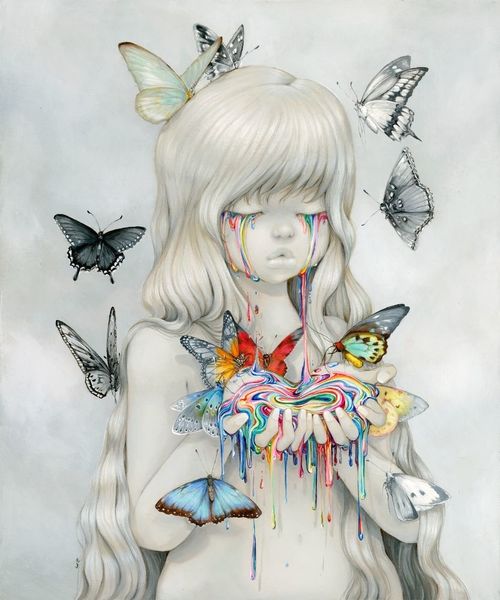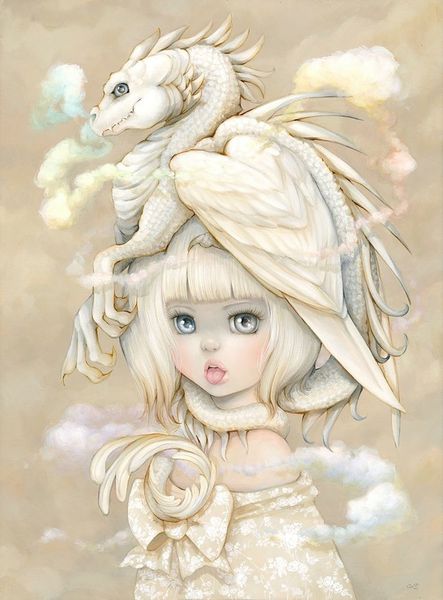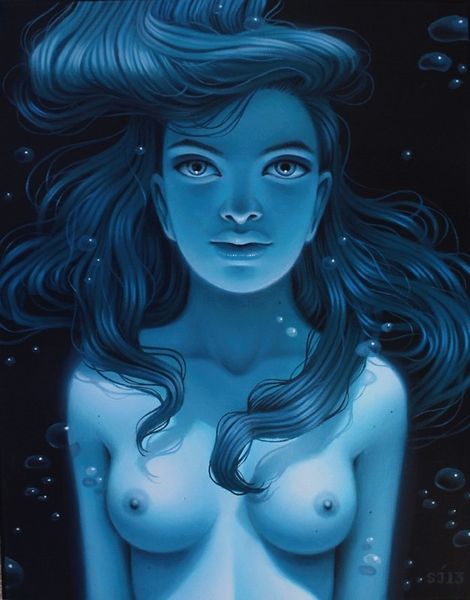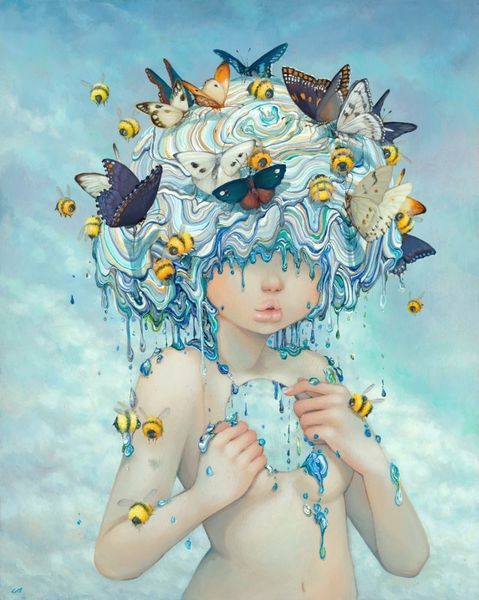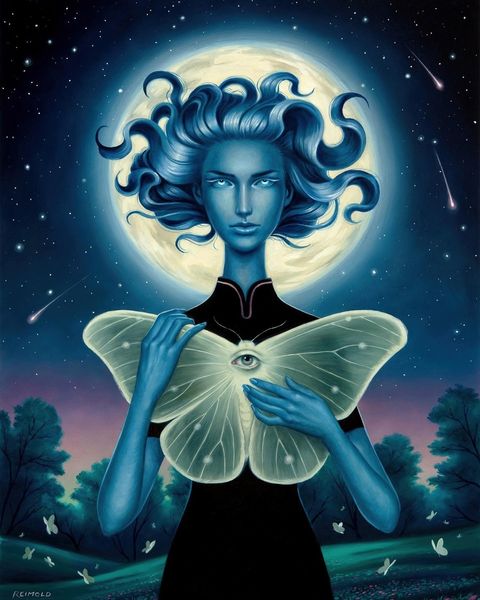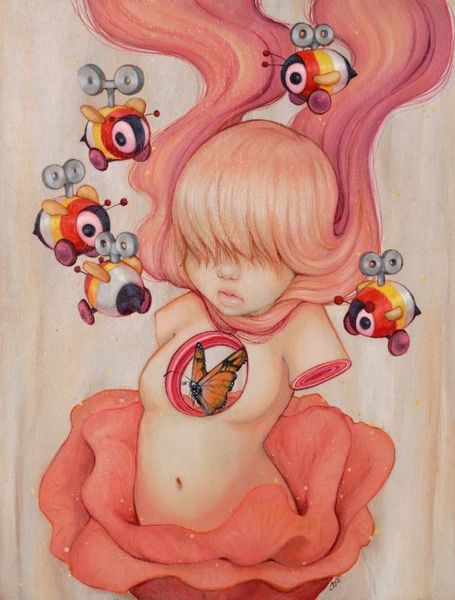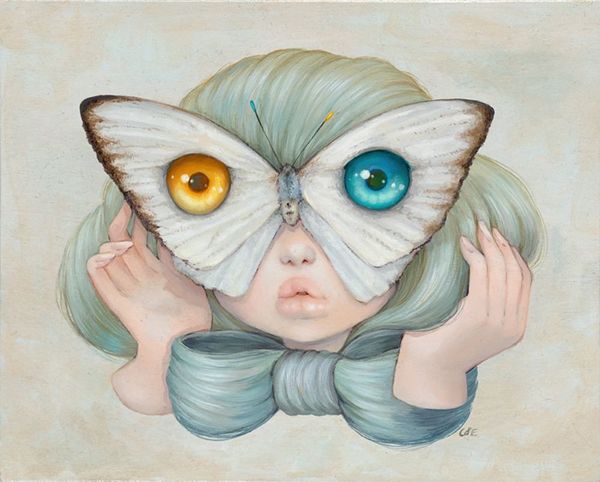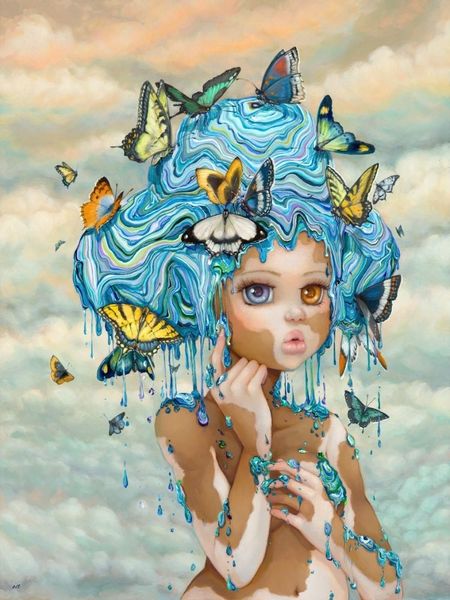
painting, acrylic-paint
#
portrait
#
pop-surrealism
#
painting
#
fantasy-art
#
acrylic-paint
#
figuration
#
surrealism
Copyright: Modern Artists: Artvee
Editor: This is Camilla d’Errico’s “la luna,” painted in 2020, seemingly in acrylics. It's very dreamlike... the girl cradling the moon. How would you interpret this work, looking at it through a historical lens? Curator: Considering d'Errico’s "la luna" within its cultural context, we see a reflection of contemporary fascinations with myth, femininity, and personal identity. The piece engages with a longer art historical lineage of the moon as a symbolic force, often connected to female empowerment. It recalls Artemisia Gentileschi who challenged gendered norms, creating powerful portrayals of women in control of their narrative and destiny. Editor: So, are you saying that a contemporary artist like d'Errico is in dialogue with historical trends, but using, perhaps, updated visual language? Curator: Precisely! D’Errico uses the language of Pop Surrealism—drawing from Japanese manga influences—which broadens her audience through a contemporary medium. The portrayal also intersects with issues around idealized androgyny, perhaps echoing concerns over representations of childhood innocence versus adult sexuality pervasive in modern art and pop culture. Do you think there’s a social commentary aspect present here? Editor: I think it's hard to ignore how exposed she is in contrast with her childlike face, which I think invites this tension between innocence and sexuality that you are talking about. Curator: Yes, this tension reflects ongoing debates around representation within institutions and culture, questioning how power dynamics influence what images we valorize and consume. It’s vital that museums like ours are at the forefront of exhibiting work like this and allowing new audiences a space to ask questions about gender, the body, and history. Editor: That's a very good point. I hadn’t considered all these historical and social levels at play, so thanks for broadening my perspective! Curator: My pleasure! I think thinking through how a work is perceived is the ultimate act of engaging with a work of art and acknowledging its social impact.
Comments
No comments
Be the first to comment and join the conversation on the ultimate creative platform.
